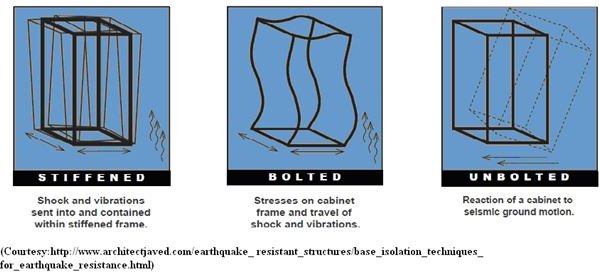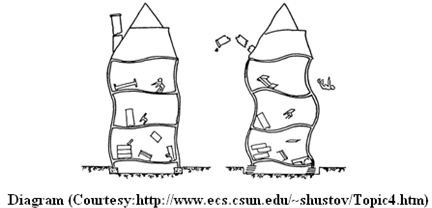How does a Base Isolation work on a Building after an Earthquake.
Principles
In contemporary, base isolation is applied to diverse structural design technique for buildings and bridges situated in severe seismic areas. Many structures are being built making use of this technique, while many others are in the design stage or under building phase. Almost all the finished buildings and those under construction utilize rubber isolation bearings in the isolation system.
Base isolation right from the very start depended on two mainstays: heavy damping and frequency separation. But not much attention was paid to the heavy damping kind which is a well-built association between a substructure and superstructure. Then decoupling them with the aid of connections is not good. Thus the development of proper devises providing for seismic-isolated structures was felt.
REGULAR AND BASE-ISOLATED BUILDING
There are 3 fundamental factors in any pragmatic seismic isolation system. They are:
• A stretchy bestriding so that the time of tremor of the entire system is
prolonged adequately to decrease the force reaction
• A moister or energy dissipater for the proportional deviations between building
and ground can be checked to a virtual design level
• A way of allowing for firmness under little (service) load levels, like wind and negligible earthquakes
Working Principle
The figure below shows how an earthquake works on base isolated buildings and a conventional, permanent-base building. Owing to an earthquake, the ground below each building begins to move. Each building responds with movement which slopes in the direction of the right. The buildings swing in the reverse direction to the ground movement is due to inactivity. The effects of the inertia acting on the building is the most critical of all those forces which takes place at the time of an earthquake. The un-isolated building also alters its form from a quadrangle to a quadrilateral causing deformation to the building. The most crucial harm that an earthquake brings to buildings is the twirl which the building undergoes due to the inertial forces acting on the building.
DESIGNING TECHNIQUE OF BASE ISOLATION BUILDINGS

Reaction of base isolated buildings
The base-isolated building retains its chief, orthogonal shape. The base isolated building moves away from the direction of distortion or damage. Acceleration is decreased as the base isolation system step-ups a buildings period of quake which is the time acquired by a building to move back and away and then return to its original position.
How base isolation works

How base isolation works
Two horizontal platforms as depicted in the figure can shift liberally against each other in a single rectangular direction. These are set up underneath subsisting or new buildings. By fine-tuning the dynamic features of the base isolation system its movement in at the time of a seismic occurrence invalidates the apparent motion of the supporting structure.
